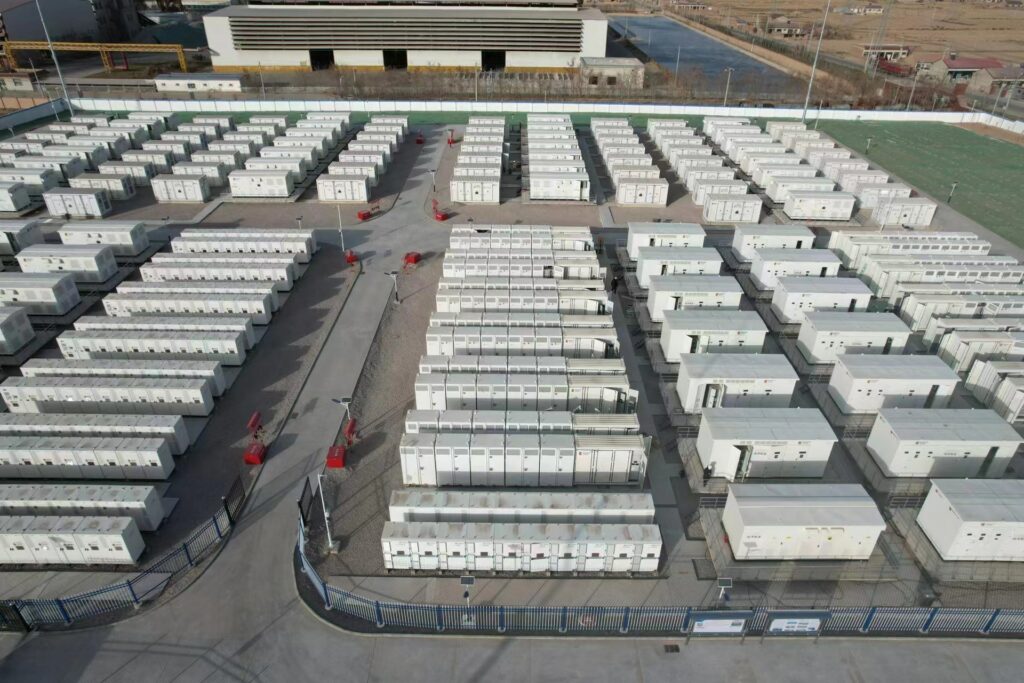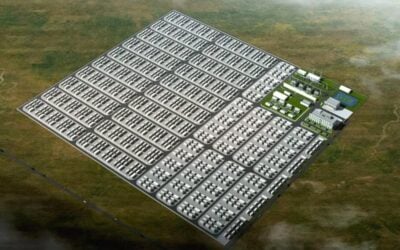
After a difficult couple of years which saw the trend of falling lithium battery prices temporarily reverse, a 14% drop in lithium-ion (Li-ion) battery pack cost from 2022-2023 has been recorded by BloombergNEF.
The market research and analysis group has published the new edition of its annual survey of battery pricing, finding that prices have been falling again this year after “unprecedented price increases” in 2022.
Enjoy 12 months of exclusive analysis
- Regular insight and analysis of the industry’s biggest developments
- In-depth interviews with the industry’s leading figures
- Annual digital subscription to the PV Tech Power journal
- Discounts on Solar Media’s portfolio of events, in-person and virtual
Meanwhile, demand for batteries across the electric vehicle (EV) and battery energy storage system (BESS) markets will likely total 950GWh globally in 2023, according to BloombergNEF.
On average, pack prices fell 14% from 2022 levels to a record low of US$139/kWh this year. This reduction was driven by the dynamics of falling raw material and component prices, and increases in production capacity.
However, despite the good news, BloombergNEF (BNEF) no longer expects to find average pack prices fall below US$100/kWh by 2024 (as it predicted in 2020), nor by 2026 (as it predicted last year). It will however be likely to happen before the end of this decade, with BNEF forecasting that the average pack will cost about US$113/kWh in 2025, and decline in cost sharply to around US$80/kWh by 2030.
Indeed, as supply chain issues like rising raw material costs, post-COVID logistical challenges and rising demand for EVs converged in the past couple of years, BNEF had stated in its 2021 edition that 2022 may be the first year since its surveys began in 2010 that the cost of batteries may be seen to rise.
That prediction was proven correct, with BNEF reporting a 7% average pack price increase from 2021 to 2022, hitting US$151/kWh last year. That sharp reversal had followed a decade of consistent declines of around 10% each year.
Cheapest in China, while US and Europe face learning curve
Perhaps unsurprisingly, the cheapest battery packs are to be found in China, given the country’s massive scale of manufacturing and involvement across the whole value chain from materials processing to finished products, as well as its early adopter advantage in terms of tech development and knowhow.
Packs in China were found to be at an average of US$126/kWh while packs made in the US and Europe were 11% and 26% higher respectively. With both the US and Europe battling to become significant players in the battery value chain, the higher prices reflects the relative immaturity of their industries, as well as the fact that China’s many manufacturers are now competing with each other on price, BNEF said.
In May, commodity price reporting agency Fastmarkets said that it expected nickel manganese cobalt (NMC) Li-ion battery pack prices to fall below US$100/kWh in 2027, and lower-cost lithium iron phosphate (LFP) packs to hit the sub-US$100 threshold even sooner, by 2025.
Again, Fastmarkets noted that those price points could be hit quicker in China, while Fastmarkets Battery Raw Materials Analyst Jordan Roberts said lithium carbonate prices would remain elevated over 2023, but wouldn’t go back up to the peak prices seen last year.
The arrest in the pace of cost declines hit the industry with some shock, coming after BNEF found some pack prices below US$100/kWh as early as 2020.
It has been “another year where battery prices closely followed raw material prices,” and the dynamics of why and how prices are falling have shifted, according to BNEF analyst Evelina Stoikou.
“In the many years that we’ve been doing this survey, falling prices have been driven by scale learnings and technological innovation, but that dynamic has changed,” Stoikou said.
“The drop in prices this year was attributed to significant growth in production capacity across the value chain in combination with weaker-than-expected demand.”
BNEF forecasted that 2024 will see pack prices drop to US$133/kWh, based largely on an expectation that lithium, nickel and cobalt costs will drop again, according to miners and metals traders it surveyed for its new report.
Low-cost LFP shift continues
With both the EV industry and stationary storage sectors increasingly adopting batteries with LFP cathode chemistry, LFP pack average prices were found to be US$130/kWh and LFP cells at US$95/kWh. LFP is now just less than 1/3 (32%) cheaper than NMC.
Another interesting aspect of the changing dynamic from 2022 to 2023’s edition of the BNEF survey is that although LFP is a lower cost cathode chemistry than NMC, the portion of lithium carbonate used in its production is much higher than it is in NMC. That meant when lithium carbonate prices spiked last year, the cost of LFP went up faster than its legacy rival’s.
In the past two years, battery prices have “been on a rollercoaster,” BNEF head of energy storage research Yayoi Sekine said.
“Large markets like the US and Europe are building up their local cell manufacturing and we’re keenly watching how production incentives and tightening regulations on critical minerals will impact battery prices.”
Those efforts at localisation would add complexity to regional battery pricing dynamics in the coming years. The US’ Inflation Reduction Act and Bipartisan Infrastructure Law legislation is seeing billions of dollars being pumped into battery value chain investment, while just a few days ago, lawmakers in the European Union (EU) approved the start of negotiations on the Net Zero Industry Act, the bloc’s response to the US’ pace-setting legislation.
Energy-Storage.news’ publisher Solar Media will host the 9th annual Energy Storage Summit EU in London, 21-22 February 2024. This year it is moving to a larger venue, bringing together Europe’s leading investors, policymakers, developers, utilities, energy buyers and service providers all in one place. Visit the official site for more info.






